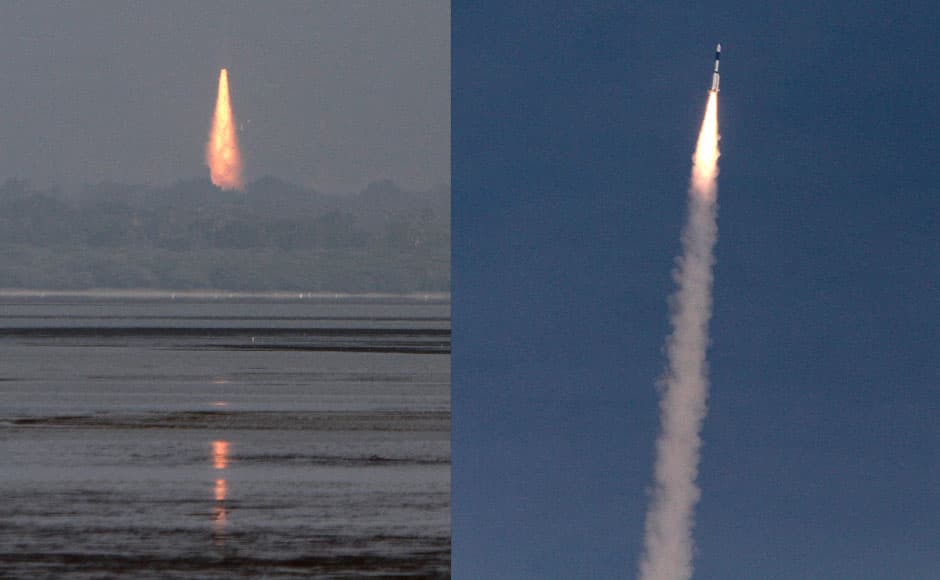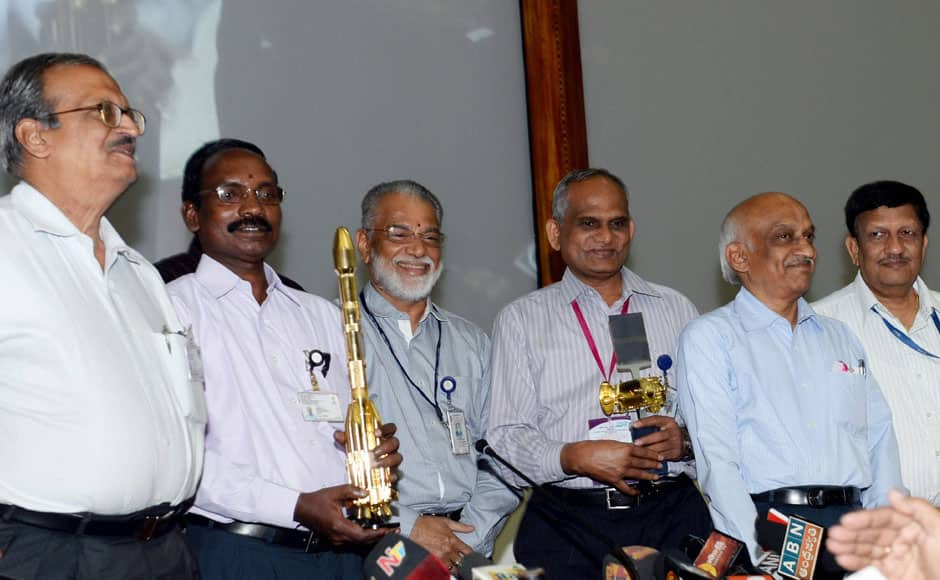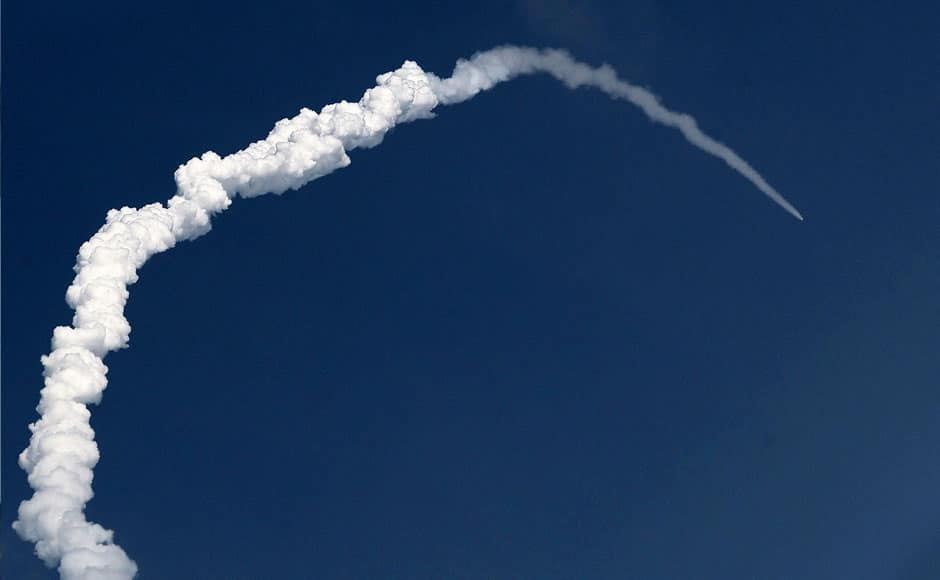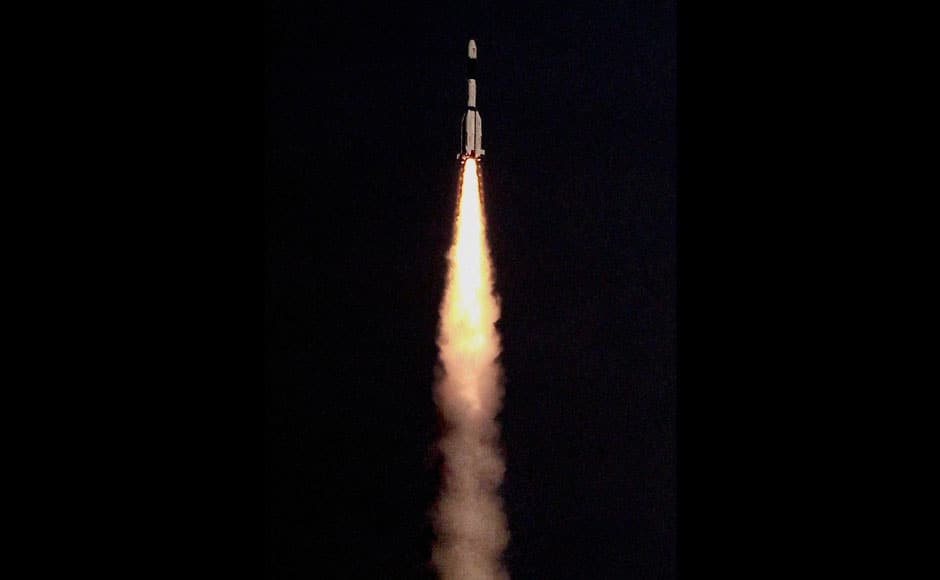[caption id=“attachment_1323757” align=“alignleft” width=“940”]  India’s Geosynchronous Satellite Launch Vehicle (GSLV-D5) blasts off carrying a 1980 kg (4365 pounds) GSAT-14 communication satellite from the Satish Dhawan space centre at Sriharikota, about 100 km (62 miles) north of the southern Indian city of Chennai, January 5, 2014. REUTERS[/caption] [caption id=“attachment_1323759” align=“alignleft” width=“940”]  ISRO Chairman Radhakrishnan and his team at the press conference after India successfully launched rejuvenated indigenous cryogenic engine- fitted GSLV-D5 carrying communication satellite GSAT-14 from Satish Dhawan Space Centre (ISRO) at Sriharikota in Andhra Pradesh on Sunday. PTI[/caption] [caption id=“attachment_1323761” align=“alignleft” width=“940”]  India successfully launched rejuvenated indigenous cryogenic engine- fitted GSLV-D5 carrying communication satellite GSAT-14 from Satish Dhawan Space Centre (ISRO) at Sriharikota in Andhra Pradesh on Sunday. PTI[/caption] [caption id=“attachment_1323763” align=“alignleft” width=“940”]  India successfully launched rejuvenated indigenous cryogenic engine- fitted GSLV-D5 carrying communication satellite GSAT-14 from Satish Dhawan Space Centre (ISRO) at Sriharikota in Andra Pradesh on Sunday. PTI[/caption]
The successful launch of GSLV will make one of the cutting edge technological breakthroughs — manned mission to space — a possibility. Here are the images
Advertisement
End of Article


)

)
)
)
)
)
)
)
)



